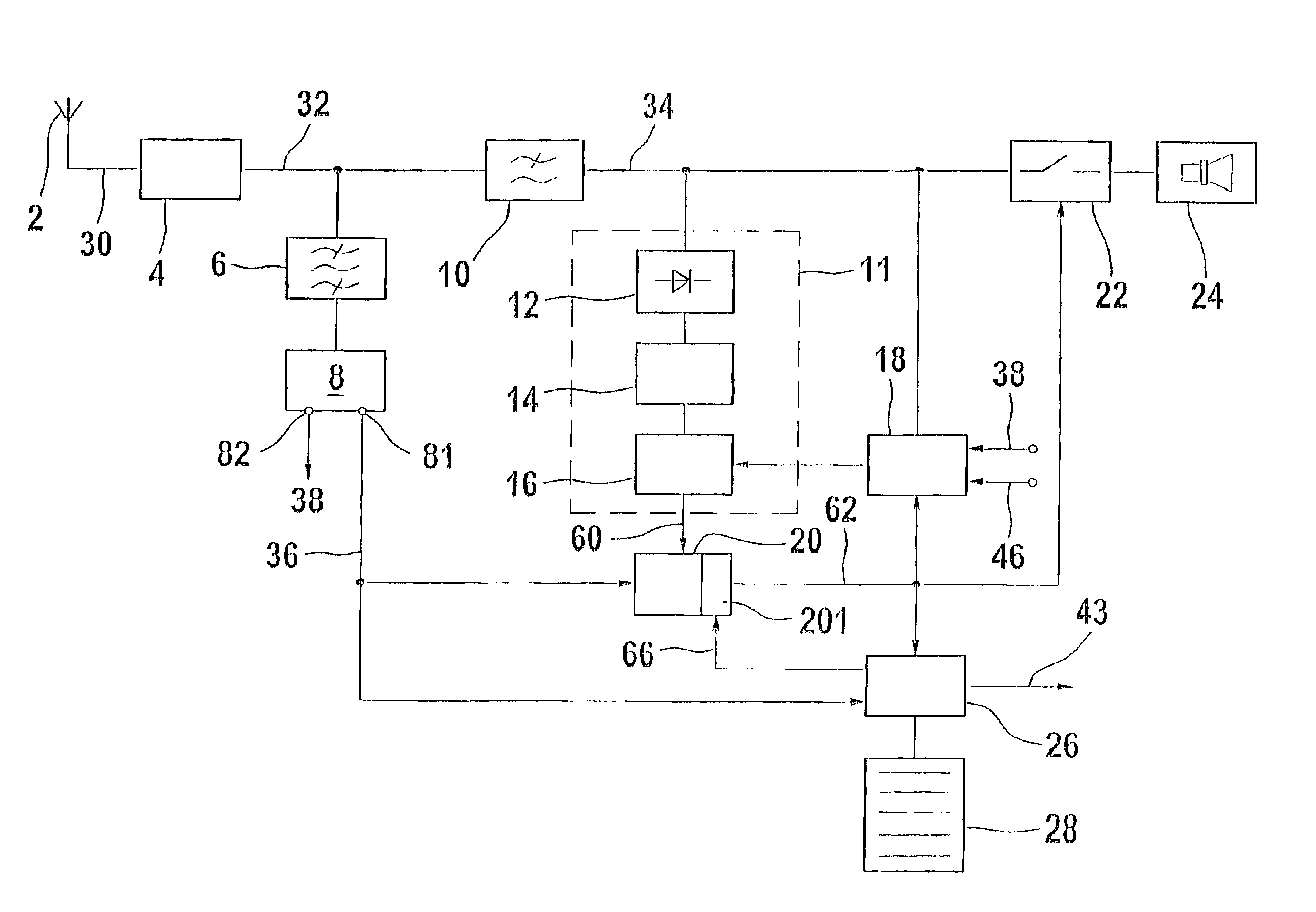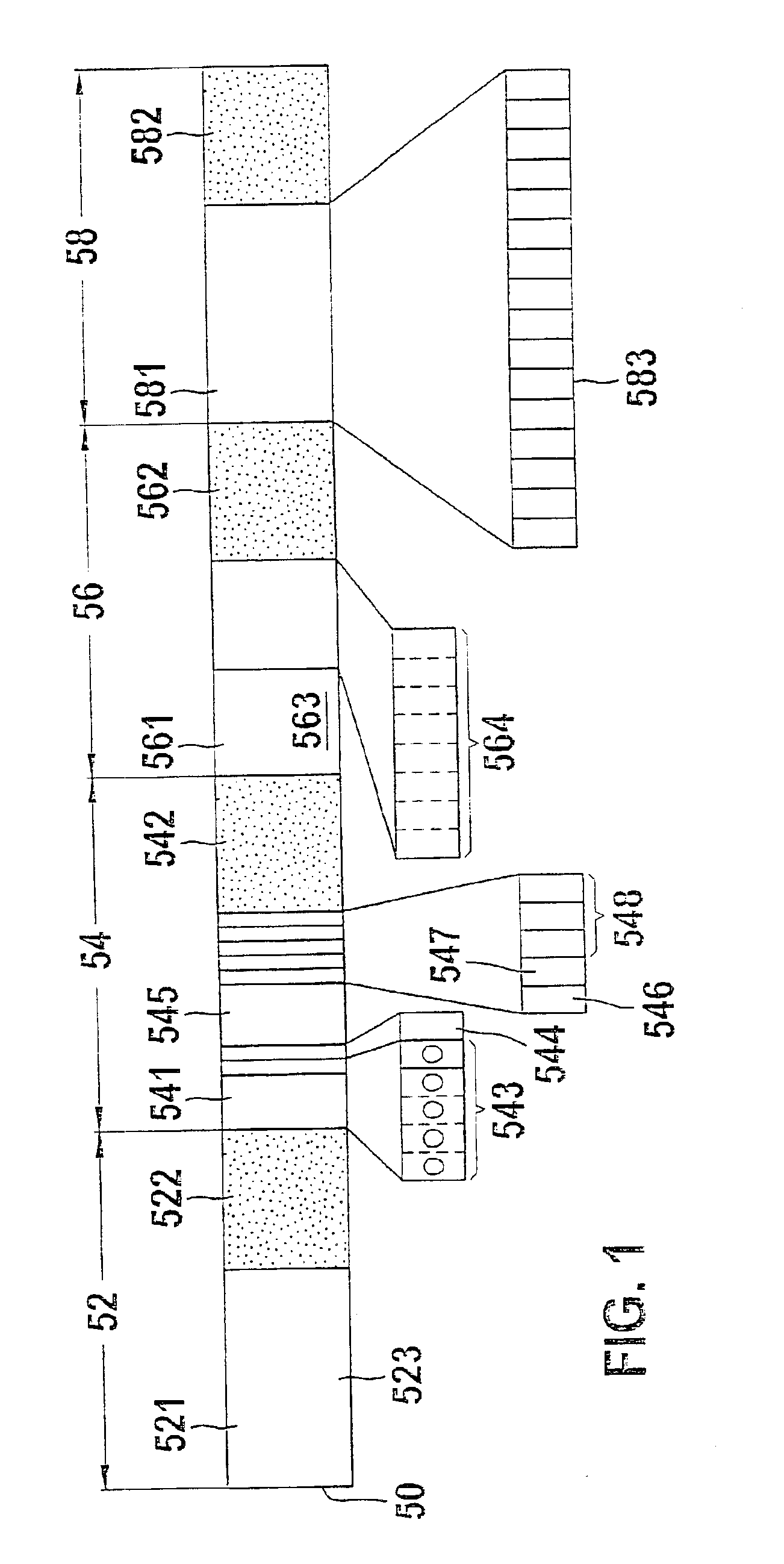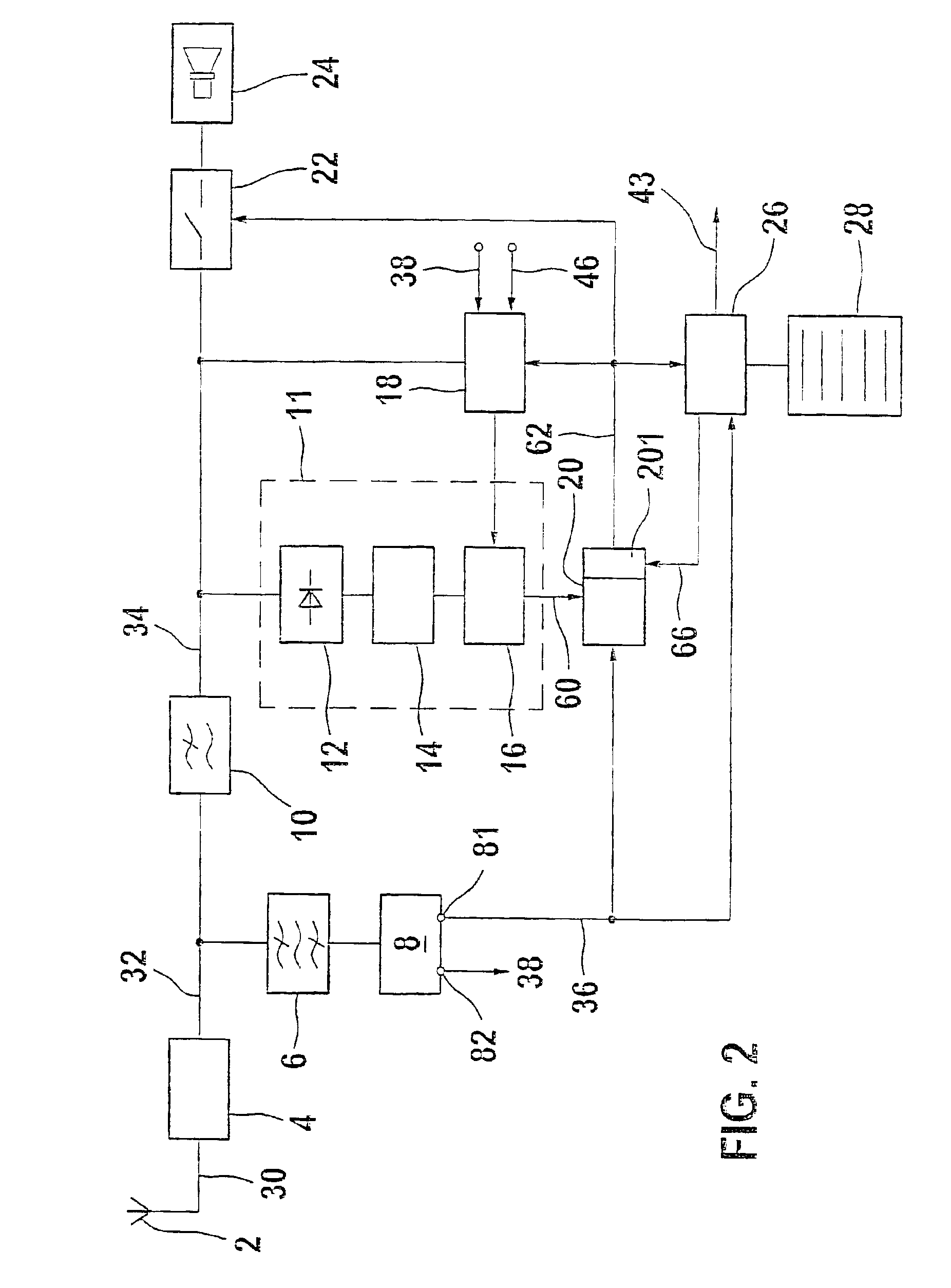Method for masking interruptions on playback of received radio signals
a technology of received radio signals and interruptions, which is applied in the field of masking interruptions in playback of received radio signals, can solve the problems of only being able to receive programs, interruptions may be audible and perceived as annoying by listeners, and achieve the effect of avoiding unnecessarily long playback interruptions
- Summary
- Abstract
- Description
- Claims
- Application Information
AI Technical Summary
Benefits of technology
Problems solved by technology
Method used
Image
Examples
Embodiment Construction
[0023]According to the RDS specification described above, additional digital information is transmitted on a radio transmission frequency in addition to the actual program signal. This additional information is combined into groups, depending on the different types of information content to be transmitted. The groups may be broadcast repeatedly or as a continuous data stream having a variable information content at a data rate of, for example, 1187.5 bits per second.
[0024]FIG. 1 is a diagram showing detail of an RDS signal within an “0A” type RDS group. A group 50 includes four blocks 52, 54, 56, 58, each having 26 bits. The first sixteen bits of each block form information word 521, 541, 561, 581 containing the actual information, and the last ten bits form a combined test and offset word 522, 542, 562, 582. The test word is used for error recognition and correction, and the offset word is used for block synchronization of the receiver. All types of groups have the structure of fir...
PUM
 Login to View More
Login to View More Abstract
Description
Claims
Application Information
 Login to View More
Login to View More - R&D
- Intellectual Property
- Life Sciences
- Materials
- Tech Scout
- Unparalleled Data Quality
- Higher Quality Content
- 60% Fewer Hallucinations
Browse by: Latest US Patents, China's latest patents, Technical Efficacy Thesaurus, Application Domain, Technology Topic, Popular Technical Reports.
© 2025 PatSnap. All rights reserved.Legal|Privacy policy|Modern Slavery Act Transparency Statement|Sitemap|About US| Contact US: help@patsnap.com



